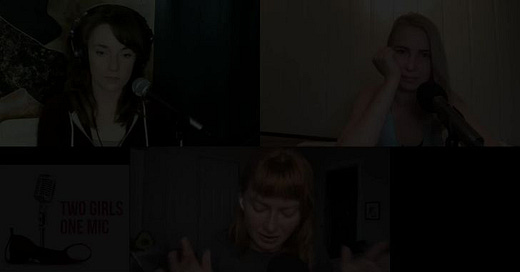It’s good to verify our assumptions. Many turn out to be wrong upon investigation.
Welcome to Sex and the State, a newsletter about power. To support my work toward decriminalizing and destigmatizing everything sex please buy a subscription, follow me on OnlyFans, or just share this post with a friend or on a social network!
~~~~~
Ya girl was on two all-girl podcasts recently! The amazing Leslee Petersen had me on the inaugural episode of the newest podcast from C4SS: The Hadal Quadrants. Writer, former sex worker, and all-around badass Kitty Stryker represented the left and I represented the right as we debated sex work politics and policy.
Then the lovely ladies at Two Girls, One Mic interviewed me about sex work. Then I learned Kate Kennedy studied planning so we got into a debate about historical preservation, of course.


Lately I’ve been having a think about the utility of studies of so-called “obvious” phenomena. My friend Rod Graham (check me out on his podcast back in November) recently expressed astonishment that someone bothered to study whether more attractive female full-service sex workers who showed more of their bodies in ads commanded higher fees. (The study showed they do.)
I actually think empirical studies of “obvious” phenomena are extremely helpful.
It’s good to verify our assumptions. Many turn out to be wrong upon investigation.
After all, everyone knows that most mainstream porn depicts violence against women, right? But that’s not true. And everyone knows that porn makes men more sexist. But it doesn’t. And everyone knows that porn is addictive. But it’s not especially addictive. And everyone knows porn actresses were abused as children. Except they’re no more likely to have been abused than any other female child in the US.
These studies also allow us to measure the phenomena quantitatively and to measure whether and how the phenomena change over time.
Plus, as others in the thread pointed out, empirical quantitative analyses enable cohort studies and meta-analyses, far more robust evidence with which to evaluate potential societal or policy changes.
It also opens up new avenues for research. For example, I’m curious about whether youth/conventional attractiveness impacts how much full-service sex workers charge more or less than how often they’re hired. I could see a situation in which younger, hotter escorts charge more but are hired less often. It would also be interesting to compare how youth/conventional attractiveness impacts hiring escorts versus swiping right on Tinder.
One of the worst impacts of sex-negativity is that it’s self-reinforcing. In part because sex is so stigmatized it’s extremely understudied. And what studies there are are very limited in utility by the biases of the researchers. I appreciate scholars like Dr. Nicole Prause, David J. Ley PhD, Justin Lehmiller, and Eric Sprankle, PsyD.
Speaking of Prause, here’s a great thread from her with book recommendations on sex:





